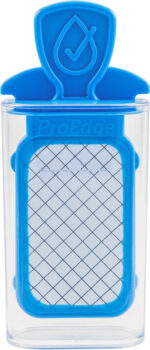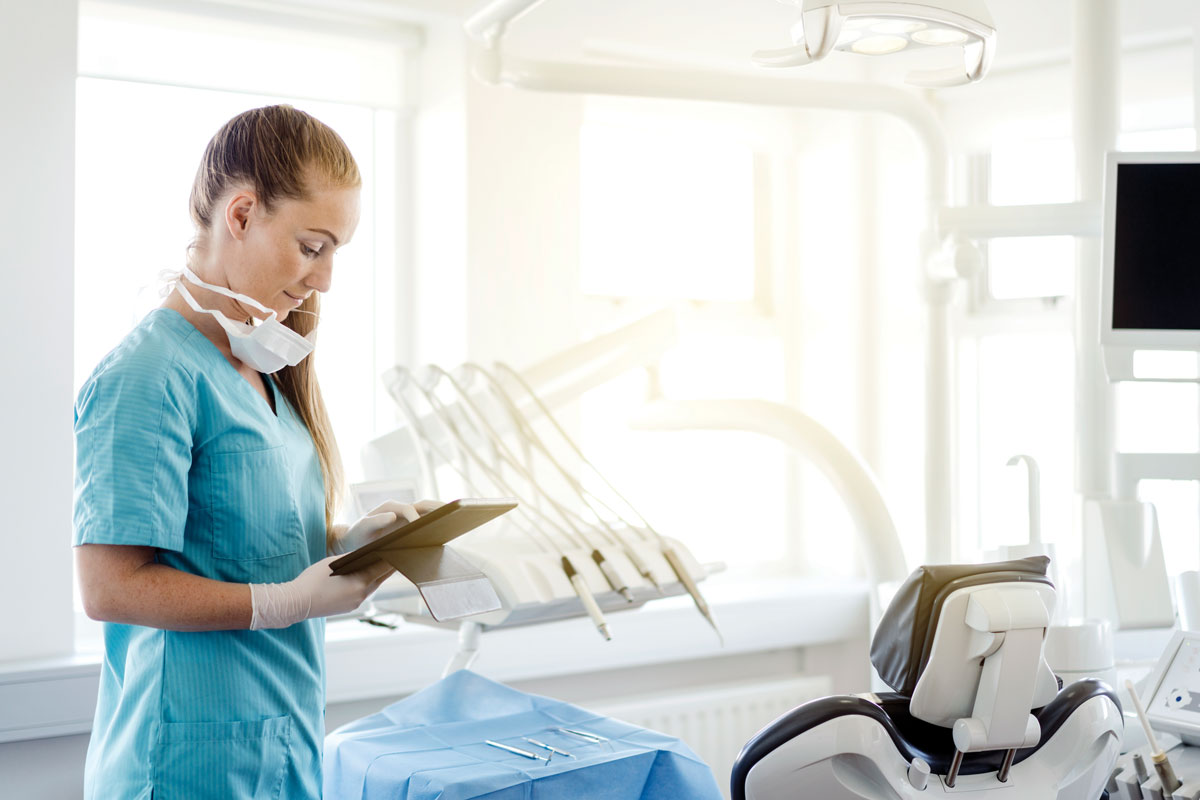You are asked to provide documentation for dental unit water quality?
$10,000 fines per day. That’s not a joke. Practices that are unable to document dental water quality are being fined this amount at this frequency in some states.
We’ve seen it – it can turn a practice upside down in a day.
Of course, the end goal of all infection control and compliance is to ensure every patient in your care receives the safest care and to protect your practice in the event of a complaint or inspection.
Since COVID-19 shut down the world and turned attention to infection prevention, inspections are increasing rather than slowing down. Whether it’s the dental board, OSHA, or the Department of Health, inspectors are likely to carry the Centers for Disease Control & Prevention’s (CDC) infection prevention checklist1 into an office and start asking questions, with the dental unit waterline portions summarized here:
- Does your practice have written policies and procedures ensuring safe water is used in all situations?
- Does your practice use dental unit waterline treatments to ensure water meets EPA regulatory standards for drinking water?
- Does your practice follow manufacturer instructions for testing frequency?
- Does your practice use sterile water as a coolant/irrigant for surgical procedures?
Let’s take a step back – why all this attention to waterlines?
Quality of water from dental units has been addressed by the CDC since 2003, but it wasn’t until the Atlanta and Anaheim outbreaks in 2015 and 2016 that focus was applied.
To give you the gist, a dental clinic in Anaheim had one of the largest infection control outbreaks in recent years. Waterlines were contaminated, and healthy patients required hospitalization, surgery, and intensive treatments. It was on local and national news; more than 200 lawsuits are still open.
Atlanta had a similar story with 35 patient infections. Of course, there have been other confirmed infections, but these rarely make the news or are shared among colleagues. Both outbreaks were incredibly unfortunate, but they put the spotlight on the importance of waterline maintenance.
Today, 32 states require compliance with the CDC guidelines, including dental unit waterline maintenance. And this year, Washington state’s dental quality assurance commission announced new regulations specifically addressing waterline safety. What was a good idea, is necessary. The ADA, CDC, and OSAP recommend compliance with the ≤ 500 CFU/mL standard for potable (drinkable) water set by the EPA.
For some perspective on that standard, consider the analysis conducted by Jean Barbeau in 1996, which showed bacteria can reach 200,000 CFU/mL in less than 5 days with sterile water and brand-new dental unit waterlines.2
Biofilm growth not only needs to be maintained but also monitored regularly.
Next Steps
Your practice doesn’t want to be caught off guard, and you do try to operate according to best practices. So what do you do? Similar to sterilization monitoring, water testing can either be done with a mail-in lab service or an in-office test. Both have pros and cons, so let’s dive in.
Mail-in Laboratory Water Testing
Consider this the gold standard when it comes to documentation. With this option, you receive a test kit from your dental supply company and send it off to a 3rd-party dental water lab, like ProEdge Dental Water Labs, to test your water quality. Labs like ProEdge provide a highly accurate and reliable service and complimentary online access to your digital water quality results reports.
There are different testing methods that can be used, but the most popular are R2A and Flo™. R2A has long been the most accepted method but can take up to 7 days to receive test results. If you’re in an inspection situation, that’s too long. Flo™ uses an advanced technology called flow cytometry, which has been used for many years for cancer research and antibiotic testing but is new to dental unit waterline testing and enables your practice to get same-day test results.
In-Office Water Testing
While mail-in laboratory testing provides significant benefits, it also needs to be return-shipped overnight and performed by laboratory technicians, increasing the costs involved.
So what if you wanted something more economical but still reliable?
In-office testing is just that. It is an acceptable method and has provided the necessary documentation to reinstate a practice after inspection. This method can be done by you or your staff and read within the office with manual documentation.
Some products, like the QuickPass® In-office Dental Water Test, provide results in as little as 48 hours at room temperature, while all others take up to 7 days unless incubated at higher temperatures. QuickPass® is a simply designed testing paddle that includes the recommended germicidal neutralization for greater reliability and is easier to read with bacteria growing red on a white membrane. Other traditional in-office water test paddles require purchasing separate germicidal neutralization and manually reading by counting dots of bacteria.

The QuickPass® In-office Dental Water Test provides results in as little as 48 hours at room temperature.
Whether you choose mail-in or in-office, Flo™ or QuickPass®, what matters most is that you have the documentation that proves your high standard of care to your patients and protects your practice if there’s ever an inspection or staff complaint.
Just like sterilization monitoring, documentation is the key.
While it can seem like you’re just getting started, you are now ready to be a step ahead when it comes to dental waterline compliance.
1. Centers for Disease Control & Prevention. April 28, 2020. Appendix A: Infection Prevention Checklist for Dental Settings: Basic Expectations for Safe Care.
2. *Barbeau J., Tanguay R., Faucher E., Avezard C., Trudel L., Cote L., Prevost AP. Appl Environ Microbial 1996; 62:3954-9.
Submitted by
Published in Catalyst – Fall/Winter 2021.
Category: Merchandise
Back to Articles